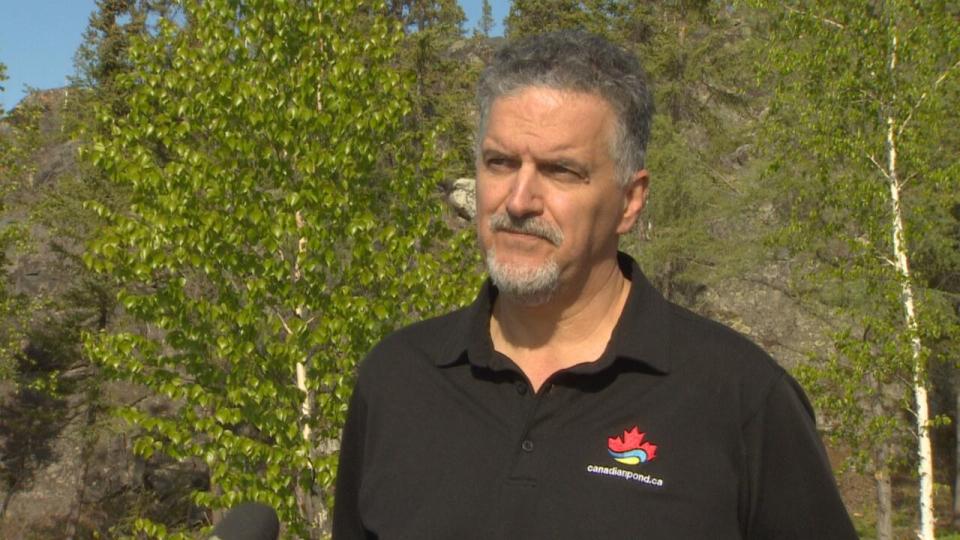Long-awaited aerator installed in Yellowknife's Frame Lake
Rio Tinto has installed a long-awaited aerator in Frame Lake.
The device will operate during the winter months to increase oxygen under the ice, with the goal of establishing a fish habitat after two years.
Frame lake remains anoxic - or without oxygen due to sediment buildup. Fish have been unable to survive in the lake since at least the 1970s.
Additionally, arsenic levels remain high in the water due to historic gold mining operations in the area.
"Today is a day of testing, but it went really well," said Mario Paris, the CEO of Canadianpond.ca Products Inc., the Canadian supplier for the German-engineered device.

"The ultimate goal is to bring life back to Frame Lake. I think it's the right technology," he added, as he and his team finished the device's electrical wiring.
"It's a good choice."
Even though the aerator sits in the middle of the lake, it will host an internet connection and be in communication with engineers in both Germany and the city of Yellowknife, Paris said.
The technology, he added, is possibly the most advanced of its kind in the world.
"What's beautiful about this system is that it will turn on only if there's a need for oxygen," he added.
Installation delayed
Paris is proposing having the device run all summer long, instead of waiting for winter, he said, in order to better understand the behavior of the lake.
"It's also a good time to test the equipment," he said, referring to the mild weather.
The aerator has faced numerous delays since it was first announced, due to factors like the COVID-19 pandemic and the 2023 wildfires.
Rio Tinto proposed the project after being required to offset fish habitat disturbance due to the operation of its Diavik Diamond Mine.
The device's installation was originally planned for Tuesday, but the day was used instead to do a dry run on land of the installation process.
Nahanni Construction told CBC News Wednesday, the device will be tested for 48 hours then turned off until the winter months.


